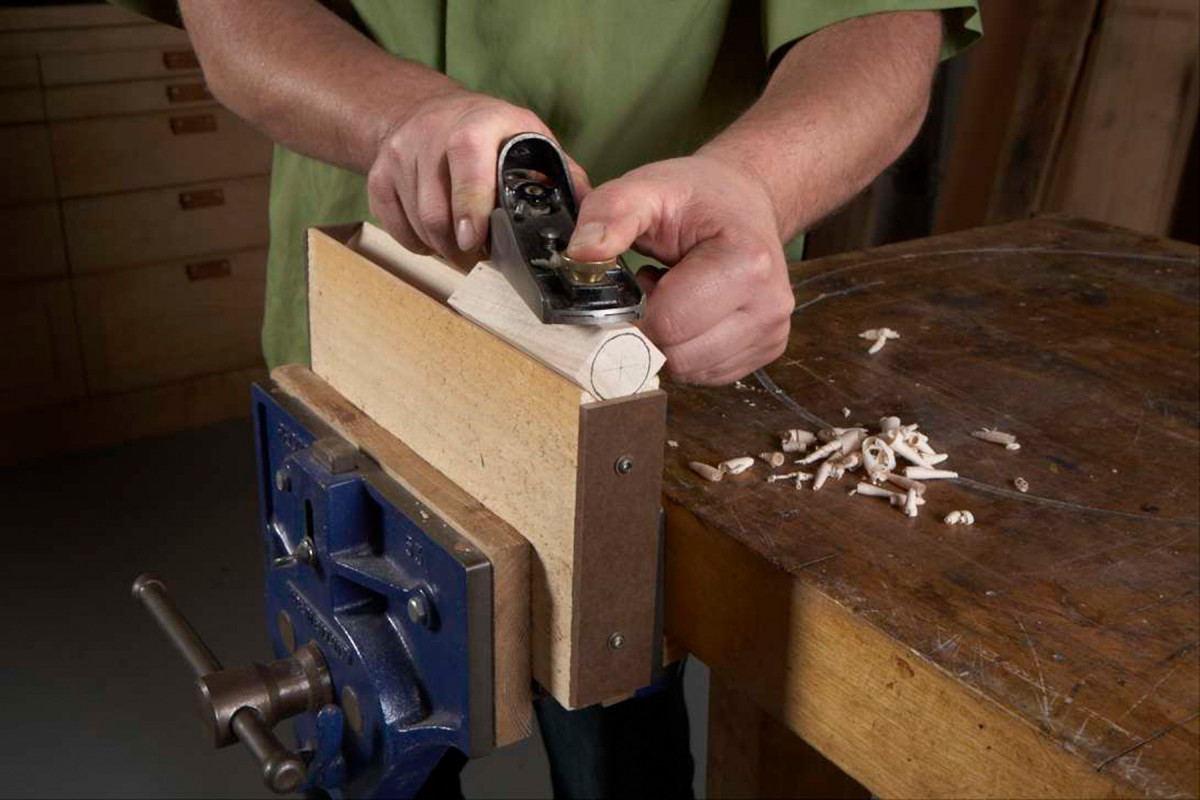We may receive a commission when you use our affiliate links. However, this does not impact our recommendations.

I don’t have a lathe, so when I need to make a cylindrical part, I do it by hand. Using this holding device, I can easily turn a square piece into a round piece using a hand plane—and you can, too.
This jig is about as simple as it gets. It’s just a wide board with a deep V-groove in one edge and a shallow V-groove in the opposite edge. Stop blocks screwed to the end of the jig serve both grooves. Use whichever groove suits the thickness of the blank you start with.
Draw the final diameter of your part on each end of the blank. Butt the blank against the stop and start planing off corners. Keep going until you’ve created an octagon with equal sides. The sides don’t have to be equal in width—just eyeball it. Plane off the corners again to make sixteen equal sides, and so on, until you reach your layout lines. –Alejandro Balbis
Here are some supplies and tools we find essential in our everyday work around the shop. We may receive a commission from sales referred by our links; however, we have carefully selected these products for their usefulness and quality.









